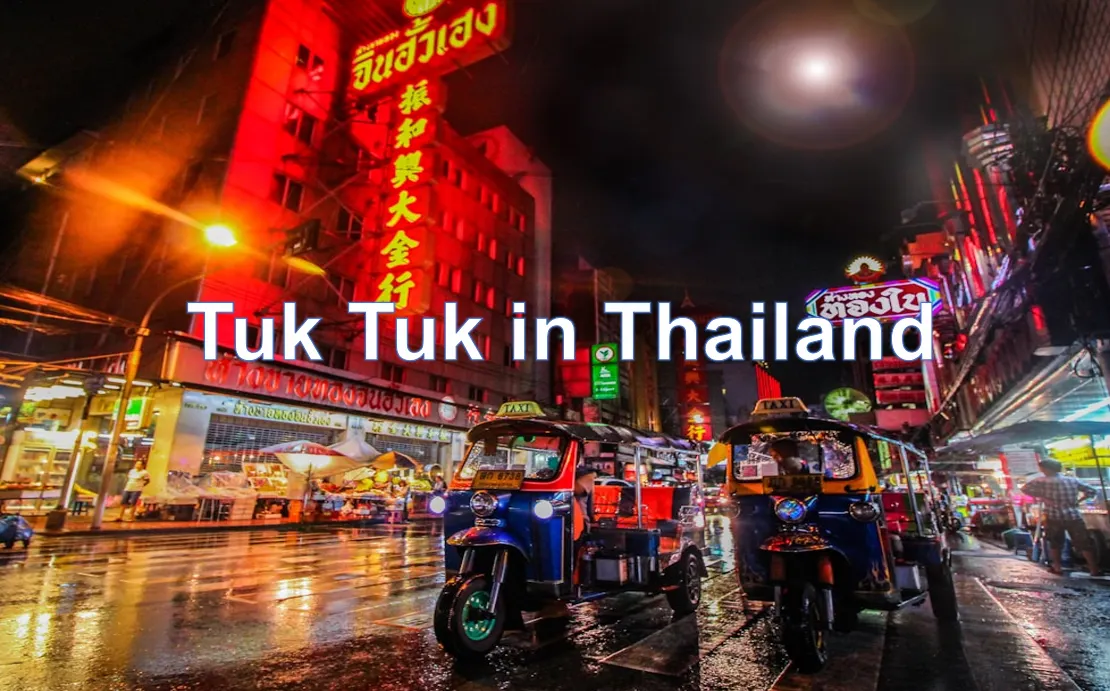
The humble Tuk tuk: Thailand's iconic rickshaw taxis (source: Florian Wehde / Unsplash).
Anyone who's been to Bangkok will come home with a story or two about tuk tuks. These unique and ubiquitous little motorized rickshaws are an icon of the city itself. And like the city, they often divide opinion – to some they are a menace, while to others they're a harmless bit of fun.
But what are they really? Where did they come from? How much should they cost? And how do you use one to get from A to B? For answers to all these questions, and more, Trip.com provides everything you need to know about riding a tuk-tuk in Thailand.
Trending Bangkok Tuk-Tuk Tour

- Duration:4hrs
- Meeting Point: Saphan Taksin BTS (sky-train) Station, EXIT number 2, downstairs (the exit near the river)
- Meeting time: 17:30
- Tour Activities: Wat Arun Ratchawararam Ratchawaramahawihan(20m)>The Grand Palace(10m)>Wat Pho Thai Traditional Massage School> Pak Khlong Talat Flower Market(15m)> The Giant Swing(10m)>Chinatown(1h)
- Itinerary times are in the local time of the place of visit and may be subject to changes due to weather conditions, road conditions, and other factors.
Everything You Need to Know About Riding a Tuk Tuk in Thailand
✨Watch the video below to learn everything about Tuk Tuk👇
What is a tuk tuk?
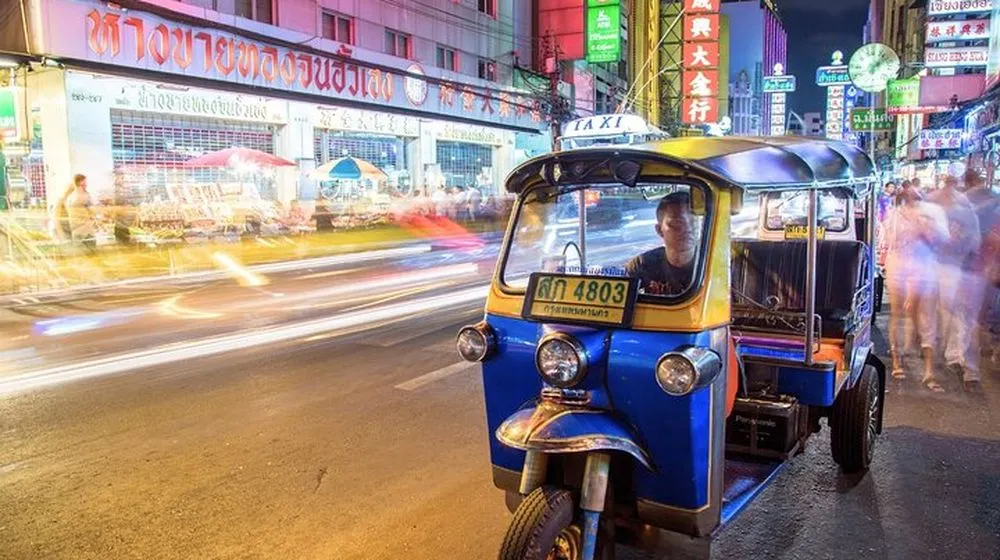
A tuk tuk (also spelled tuktuk or auto rickshaw) is a motorized three-wheeled vehicle commonly used as a form of urban transport or taxi in many countries, especially in Thailand, India, Cambodia, and others. The name "tuk tuk" comes from the sound of the vehicle's small engine.
Tuk tuks typically have a small cabin for the driver at the front and a covered seating area at the back for passengers. They are known for being able to navigate through narrow streets and heavy traffic, making them a popular choice for short trips and sightseeing tours.
How much is a tuk tuk ride in Bangkok?
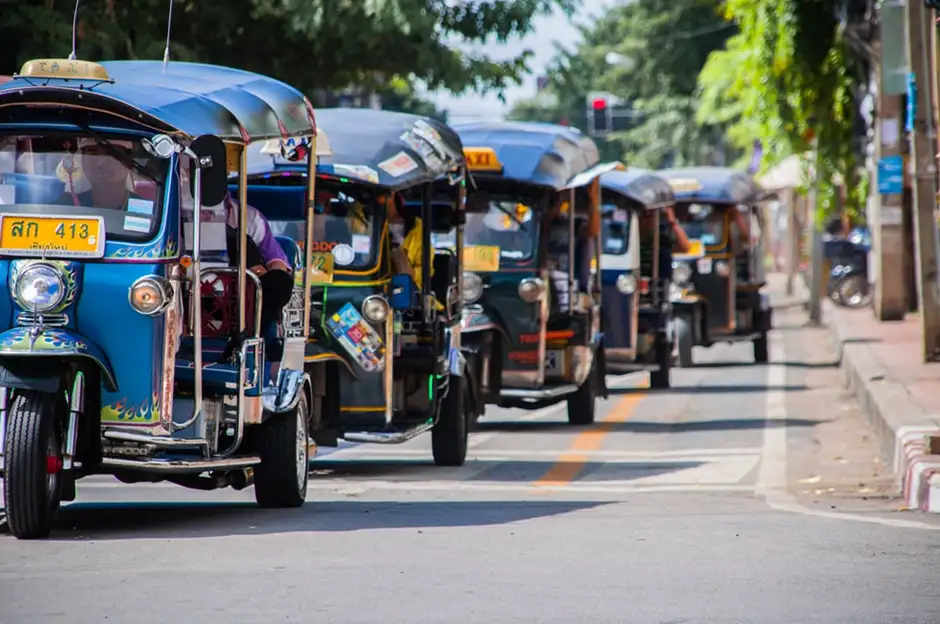
Wherever you go in Bangkok, there's sure to be a tuk tuk just around the corner (source: Chris Arthur Collins / Unsplash
The cost of a tuk tuk ride in Bangkok can vary widely depending on a number of factors, including the distance of the trip, the time of day, the traffic conditions, and the driver's own pricing. Unlike taxis, tuk tuks do not have meters, so the fare is usually negotiated before the ride begins.
As a rough estimate, a short tuk tuk ride within central Bangkok might cost anywhere from 50 to 150 Thai Baht (THB), which is approximately $1.50 to $4.50 USD, depending on the exchange rate. Longer rides or those taken during peak hours or to more distant locations could be more expensive, potentially costing upwards of 200-300 THB ($6-$9 USD) or more.
✨If you're curious about how to stay connected in Thailand, check Thailand eSIM now:
What's the popular Tuk-Tuk Tour in Thailand?
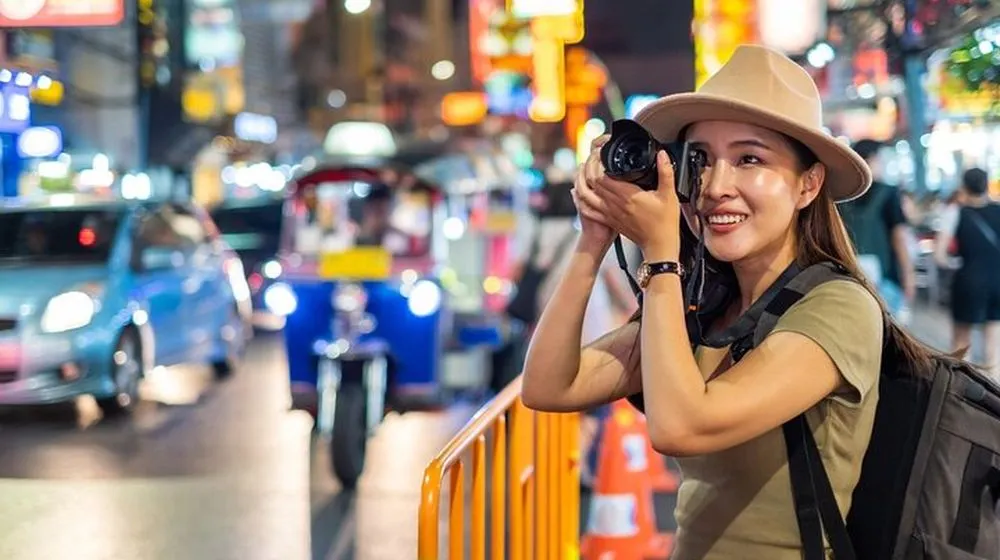
If you're planning to experience the Thai capital at night to feel the unique charm of Bangkok, take a look at Bangkok Tuk-Tuk Tour:
| Detail | |
| Duration | 4 hours |
| Meeting Point | Saphan Taksin BTS (sky-train) Station, EXIT number 2, downstairs (the exit near the river) |
| Meeting Time | 17:50 |
| Fare | -Adult (12+): $35.55 -Child (3-11): $32.70 |
| Inclusions | -Bottled water -English speaking guide -Chao Phraya Express Boat / ferry / tuk-tuk -Dessert -Street-food meal |
| Activities & Attractions | -Wat Arun Ratchawararam Ratchawaramahawihan(20m) -The Grand Palace(10m) -Wat Pho Thai Traditional Massage School -Pak Khlong Talat Flower Market(15m) -The Giant Swing(10m) -Chinatown(1h) |
| Special Note | The tour ends in Chinatown. You can take the metro back to your hotel or the guide can assist with a taxi (not included) |
How to use it
It's very simple to use the Bangkok Tuk-Tuk Tour ticket, here is a guide:
- 1. Buy Bangkok Tuk-Tuk Tour ticket at trip.com
- 2. Your voucher will be sent to your email after your booking is confirmed.
- 3. Please check the usage instructions on your voucher for more info about how to use it.
What is the history of tuk tuks in Thailand?

Tuk tuks can trace their ancestry back to the early 20th century. Back then, they were known simply as "sam lor" (meaning '3 wheels' in Thai) and were pedal-powered.
Legend has it that the first sam lor was wheeled out in Ratchasima (Korat) Province in 1933, when a Chinese merchant attached two big stabilizers to his ordinary bicycle.
The design caught on, and pretty soon sam lor were ferrying passengers all over the place. They became so popular that Bangkok authorities banned them from the city. But sam lor would soon be back with a bang, when motorized rickshaws arrived from Japan in the 1960s. These would evolve into the modern beasts that roam the streets.
Are there many kinds of tuk tuk in Thailand today?
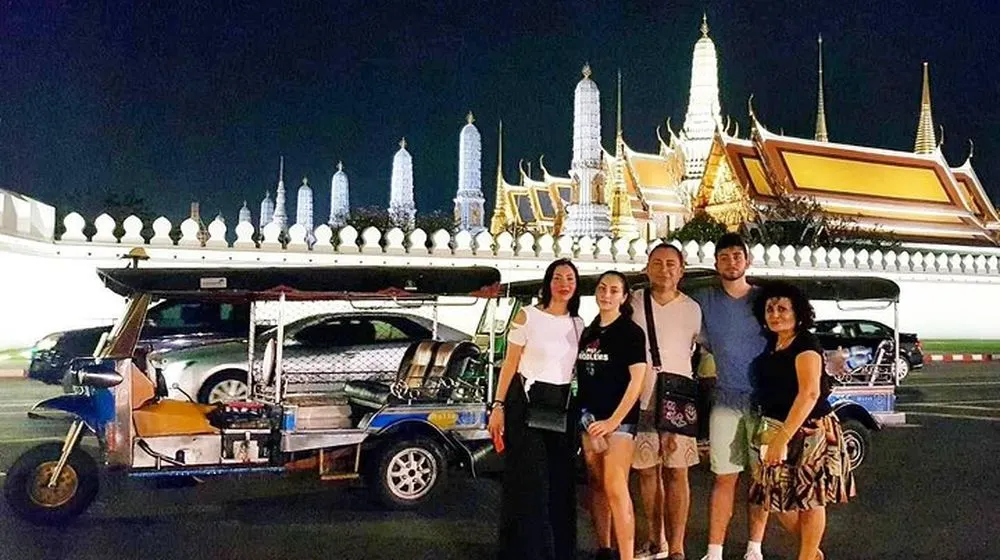
Nowadays, there are various kinds of tuk-tuks in Thailand today, reflecting the country's diverse transportation needs and the evolution of this iconic vehicle. The traditional tuk-tuk, known locally as "sam lor" (three-wheeled), is a motorized rickshaw that has become one of the symbols of Thailand.
Here are some of the different types of tuk-tuks you might encounter in Thailand:
| Types of Tuk Tuk | Detail |
| Classic Tuk Tuks | The iconic version with a two-stroke or four-stroke engine, often colorfully decorated |
| Modern Tuk Tuks | Have more efficient and environmentally friendly engines, such as LPG or electric motors. |
| Larger Tuk Tuks | Designed to carry more passengers or goods, often used in rural areas. |
| Tourist Tuk Tuks | Customized with comfortable seating and sometimes even equipped with sound systems, used primarily to cater to tourists |
| Electric Tuk Tuks | With the global push for cleaner energy, which are quieter and emit no exhaust fumes |
| Cargo Tuk Tuks | Designed or modified to transport goods rather than people, with a cargo area instead of passenger seating. |
What is the future for tuk tuks in Bangkok?

Riding a tuk tuk is an essential Bangkok experience (source: Adam Dore / Unsplash).
From motorization to custom designs, tuk tuks are always changing with the times. Today, Bangkok residents are pushing for a more eco-friendly incarnation. So, what does the future hold for the humble rickshaw?
The future of tuk tuks will depend on how they adapt to environmental concerns, regulatory changes, technological advancements, and shifts in urban transportation dynamics.
5 pro tips for riding a tuk-tuk
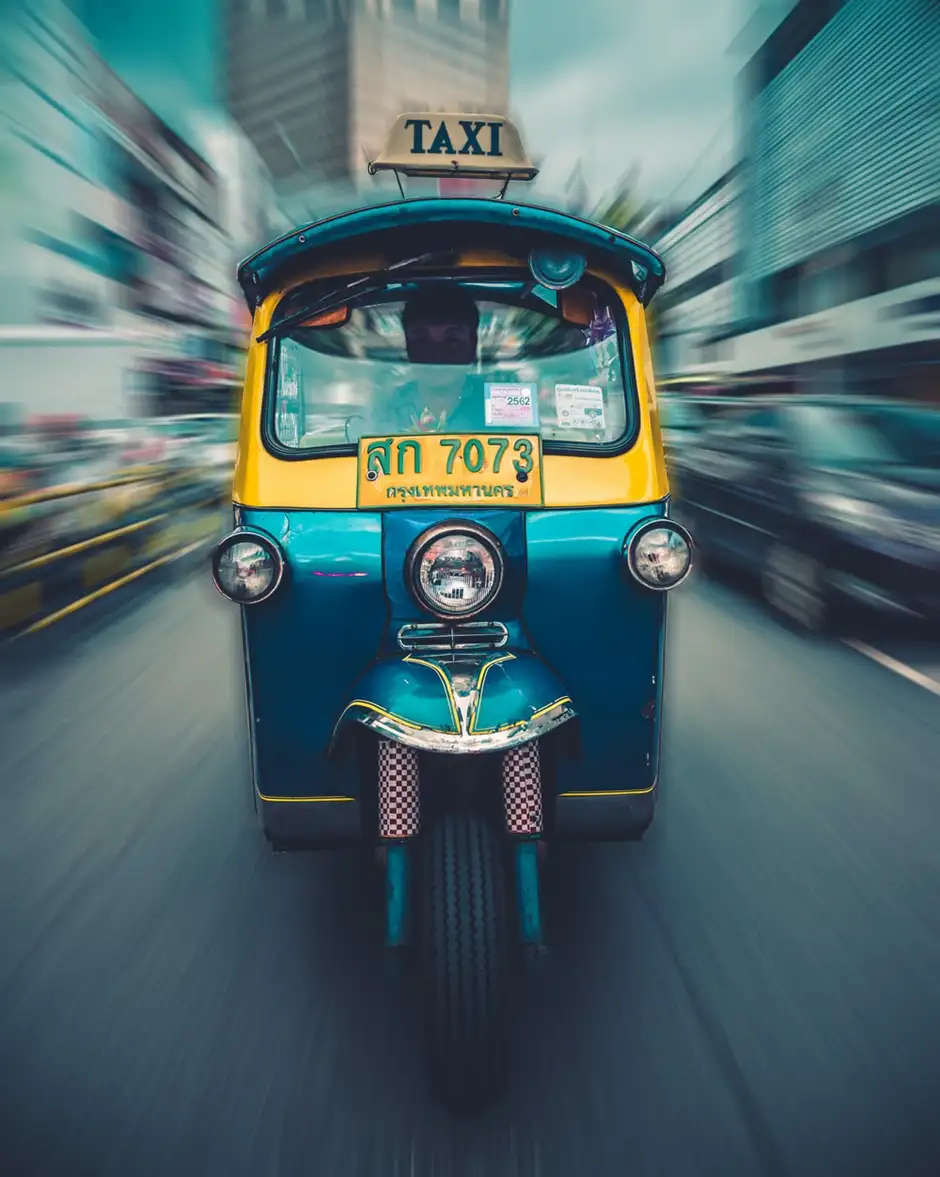
A fun way to get around, tuk tuks are always moving with the times (source: Max Bender / Unsplash)
Riding a tuk-tuk can be a thrilling and authentic way to navigate through the bustling streets of cities where they are a common mode of transport in Bangkok. Here are five pro tips to ensure a safe and enjoyable tuk-tuk experience:
1. Agree on the fare before you start
- Always negotiate and agree on the fare before you get into the tuk-tuk. Some tuk-tuk drivers may try to overcharge tourists, so it's important to settle on a price you're comfortable with.
- In some places, tuk-tuks might have meters, but they are often not used. If they are, make sure the driver resets it before you start your journey.
- Don't be afraid to walk away if you can't agree on a fair price. There's usually another tuk-tuk around the corner.
2. Know your route
- Have a general idea of where you're going and how long it should take to get there. This can help prevent drivers from taking unnecessarily long routes to increase the fare.
- Use a map or a GPS app on your phone to follow the route if you're unsure about the direction.
3. Keep your belongings secure
- Tuk-tuks are open vehicles, making it easy for opportunistic thieves to snatch bags or valuables. Keep your belongings close to you and avoid displaying expensive items.
- If you're carrying a backpack or a purse, keep it between your feet or on your lap rather than hanging it over the side.
4. Be prepared for the elements
- Tuk-tuks are open-air, so you'll be exposed to the weather. Wear sunscreen during the day, and if it's the rainy season, have a poncho or umbrella handy.
- Pollution can be a problem in busy cities, so consider wearing a mask if you're sensitive to dust and exhaust.
5. Stay alert and safe
- Hold on tight, as tuk-tuk rides can be bumpy and drivers sometimes navigate traffic aggressively.
- Be aware of local traffic laws and customs. In some places, tuk-tuks may not be allowed on certain roads or in certain areas.
- Avoid riding tuk-tuks late at night in areas that are known to be less safe or where you're unfamiliar with the surroundings.
With all the above in mind, here's one extra tip that many forget when taking a tuk-tuk in Thailand: Smile! As with so many things in the Land of Smiles, a good sense of humor – like a good tuk-tuk – goes a long way.
If you're planning a trip to Bangkok, remember you can find the best deals on flights, hotels, tours, and attractions over at Trip.com.
FAQs about riding a tuk tuk
What does the name 'tuk-tuk' mean?
The name comes from the tuk-tuks themselves, as this is the sound their engines make.Do locals use tuk-tuks, or is it just for tourists?
Tuk-tuks are used by everyone in Bangkok. You will see them taking kids to school, transporting groceries, and even helping city residents to move house!Are tuk-tuks dangerous?
While they do offer less protection than cars, they are still safer than bikes. Because they usually travel at low speeds, you're less likely to be involved in a major crash, but accidents do happen.Do you need to wear a helmet?
No-one wears a helmet in Bangkok when riding a tuk-tuk, and it is very unlikely you will be offered one. Because it has three wheels, it's technically a vehicle rather than a motorbike, so the law does not require you to wear a helmet.How much does a tuk-tuk cost?
A short tuk tuk ride within central Bangkok might cost anywhere from 50 to 150 Thai Baht (THB), which is approximately $1.50 to $4.50 USD, and longer rides or those taken during peak hours or to more distant locations could be more expensive, potentially costing upwards of 200-300 THB ($6-$9 USD) or more.
